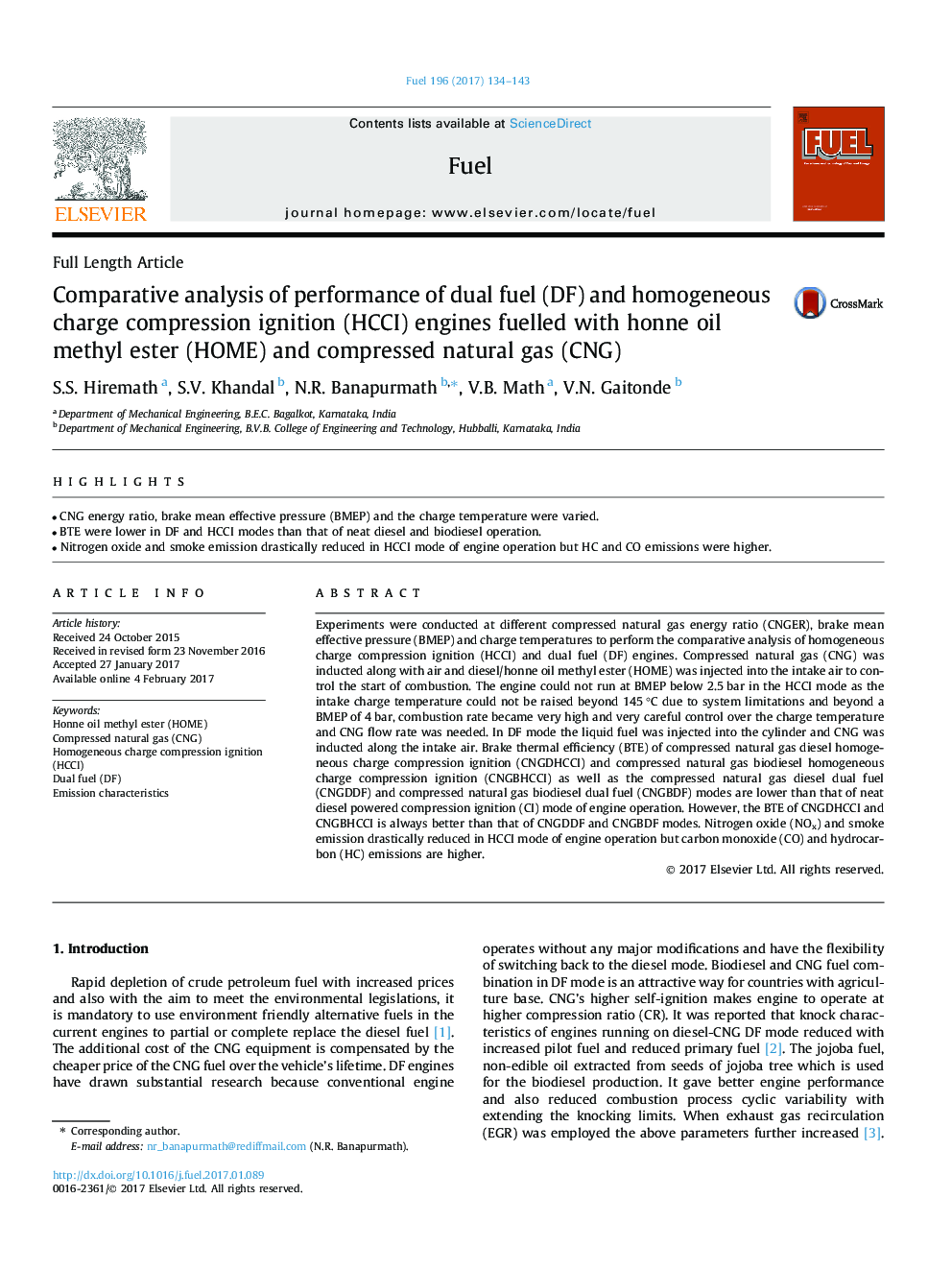| Article ID | Journal | Published Year | Pages | File Type |
|---|---|---|---|---|
| 6475009 | Fuel | 2017 | 10 Pages |
â¢CNG energy ratio, brake mean effective pressure (BMEP) and the charge temperature were varied.â¢BTE were lower in DF and HCCI modes than that of neat diesel and biodiesel operation.â¢Nitrogen oxide and smoke emission drastically reduced in HCCI mode of engine operation but HC and CO emissions were higher.
Experiments were conducted at different compressed natural gas energy ratio (CNGER), brake mean effective pressure (BMEP) and charge temperatures to perform the comparative analysis of homogeneous charge compression ignition (HCCI) and dual fuel (DF) engines. Compressed natural gas (CNG) was inducted along with air and diesel/honne oil methyl ester (HOME) was injected into the intake air to control the start of combustion. The engine could not run at BMEP below 2.5 bar in the HCCI mode as the intake charge temperature could not be raised beyond 145 °C due to system limitations and beyond a BMEP of 4 bar, combustion rate became very high and very careful control over the charge temperature and CNG flow rate was needed. In DF mode the liquid fuel was injected into the cylinder and CNG was inducted along the intake air. Brake thermal efficiency (BTE) of compressed natural gas diesel homogeneous charge compression ignition (CNGDHCCI) and compressed natural gas biodiesel homogeneous charge compression ignition (CNGBHCCI) as well as the compressed natural gas diesel dual fuel (CNGDDF) and compressed natural gas biodiesel dual fuel (CNGBDF) modes are lower than that of neat diesel powered compression ignition (CI) mode of engine operation. However, the BTE of CNGDHCCI and CNGBHCCI is always better than that of CNGDDF and CNGBDF modes. Nitrogen oxide (NOx) and smoke emission drastically reduced in HCCI mode of engine operation but carbon monoxide (CO) and hydrocarbon (HC) emissions are higher.
